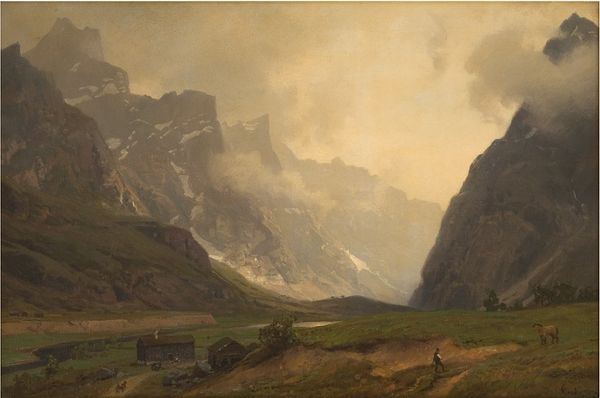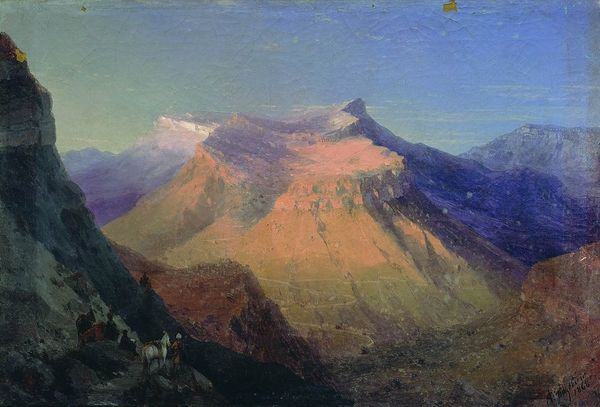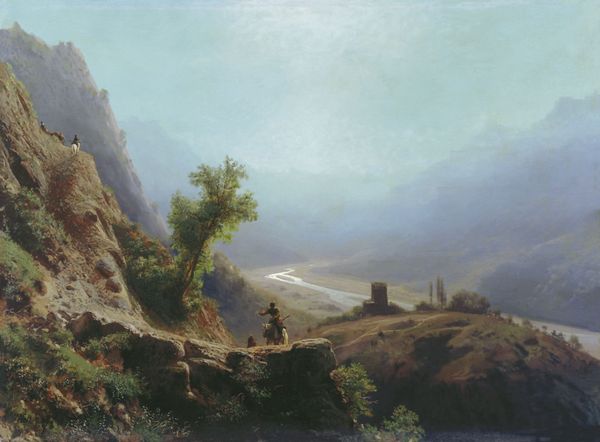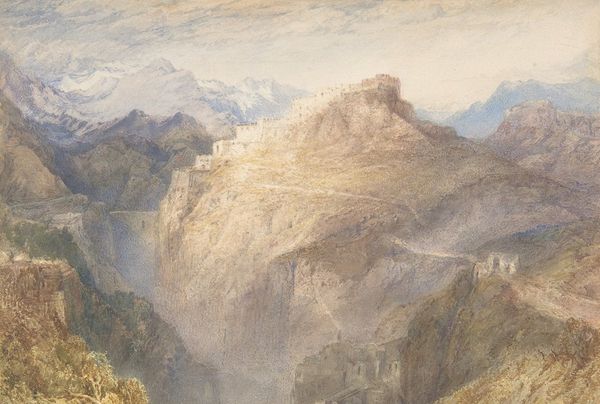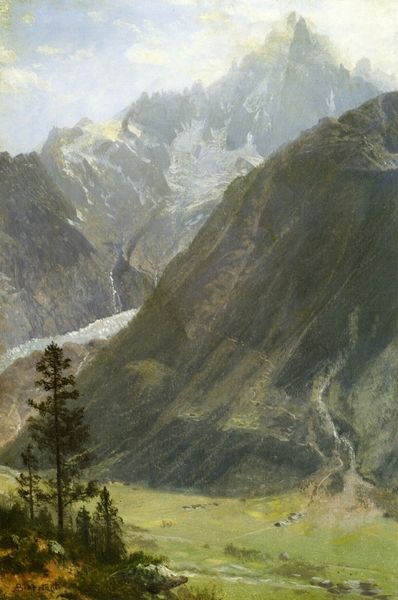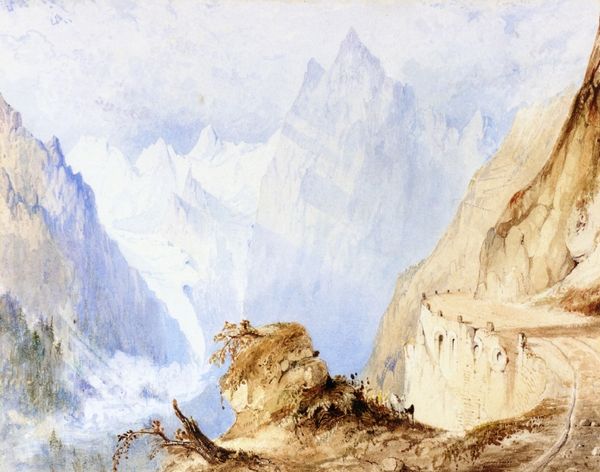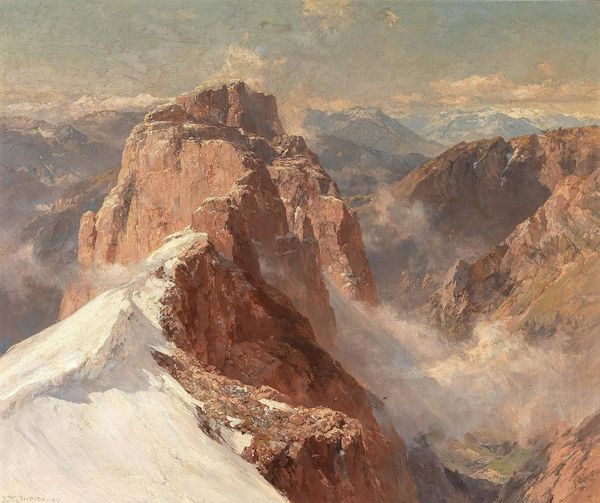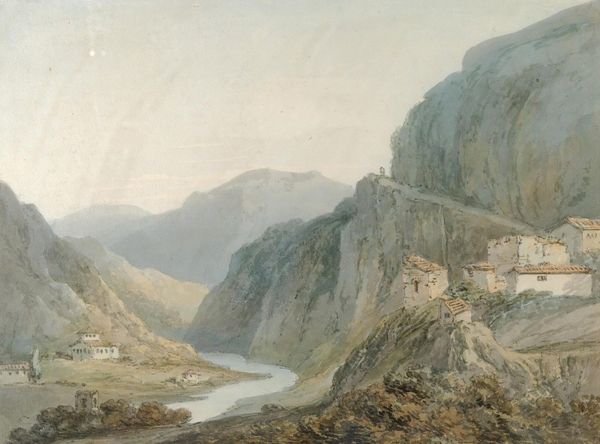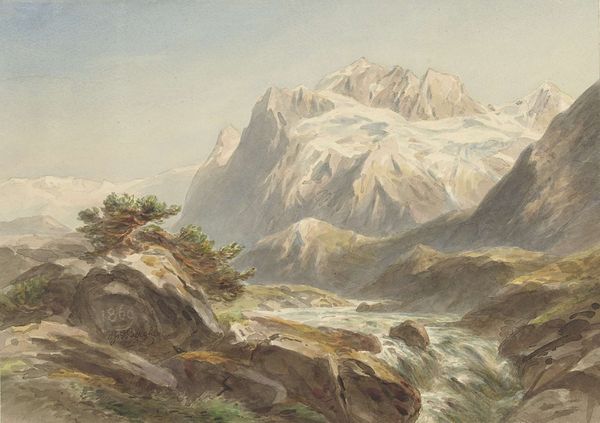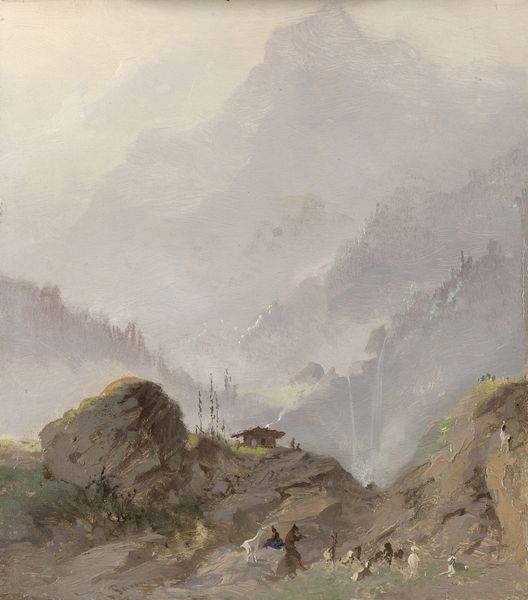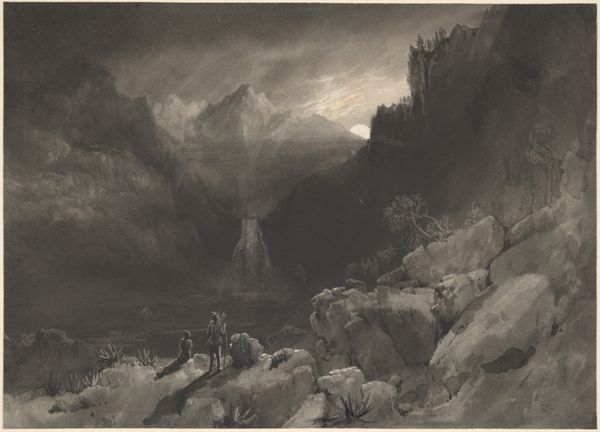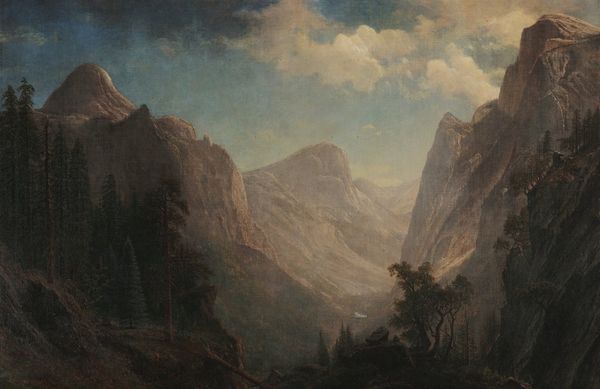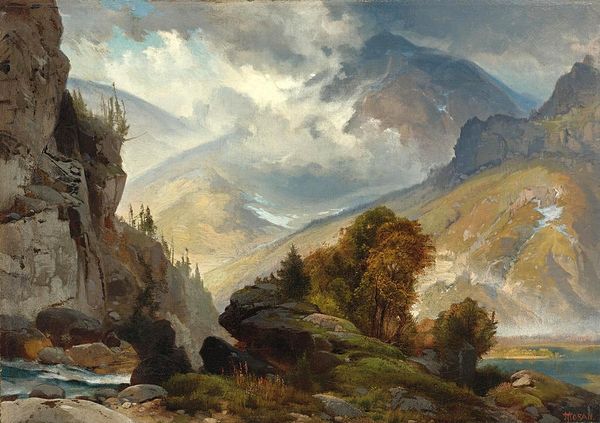
Copyright: Public Domain: Artvee
Curator: This is Ivan Aivazovsky’s painting "From Mleta to Gudauri," completed in 1868. A landscape rendered in oil paints. What are your initial impressions? Editor: The scene evokes a deep sense of precariousness. That narrow road clinging to the cliff face... it emphasizes the vulnerability of the travelers against the immensity of the landscape. Curator: Absolutely. Aivazovsky’s skillful depiction of the winding road offers an intersection of vulnerability, with considerations around who is safe or unsafe. We are seeing a crucial and historically strategic mountain pass road being travelled. We can see that most travelers are moving along with wheeled carts. Considering travel and transport at the time, do the details seem meaningful? Editor: Undoubtedly. Wheeled travel may mean merchants with wares and goods. And it points directly to the necessity and even celebration of connectivity as central to survival. These details feel essential as a demonstration of people forging connection against this vast imposing geography. Also that stark white waterfall pouring down the cliff is an explicit natural image of a kind of 'through way.' Curator: Interesting how you pull the emotional effect from those iconic details. We can interpret the mountains almost as the dominant, oppressive structure that the community seeks to subvert and navigate through their activity. A powerful metaphor for community resilience against larger political forces at that time in the Caucasus. Editor: I see how this echoes a collective perseverance… something beyond mere landscape. Curator: Exactly, the historical and socio-political background frames our understanding. It really allows us to understand art’s complex connections between individual action and communal agency. Editor: It seems to suggest that these symbols work to celebrate that historical connectivity, the emotional weight speaks directly to that lived experience of precarity and connectivity. It reframes the landscape genre. Curator: Well put. Seeing the interplay between place, people, and historical forces certainly makes Aivazovsky's painting far more relevant and engaging for contemporary viewers. Editor: It's fascinating how these iconic features create deeper meaning within that broader history. It definitely shifts one’s appreciation of landscape art!
Comments
No comments
Be the first to comment and join the conversation on the ultimate creative platform.
